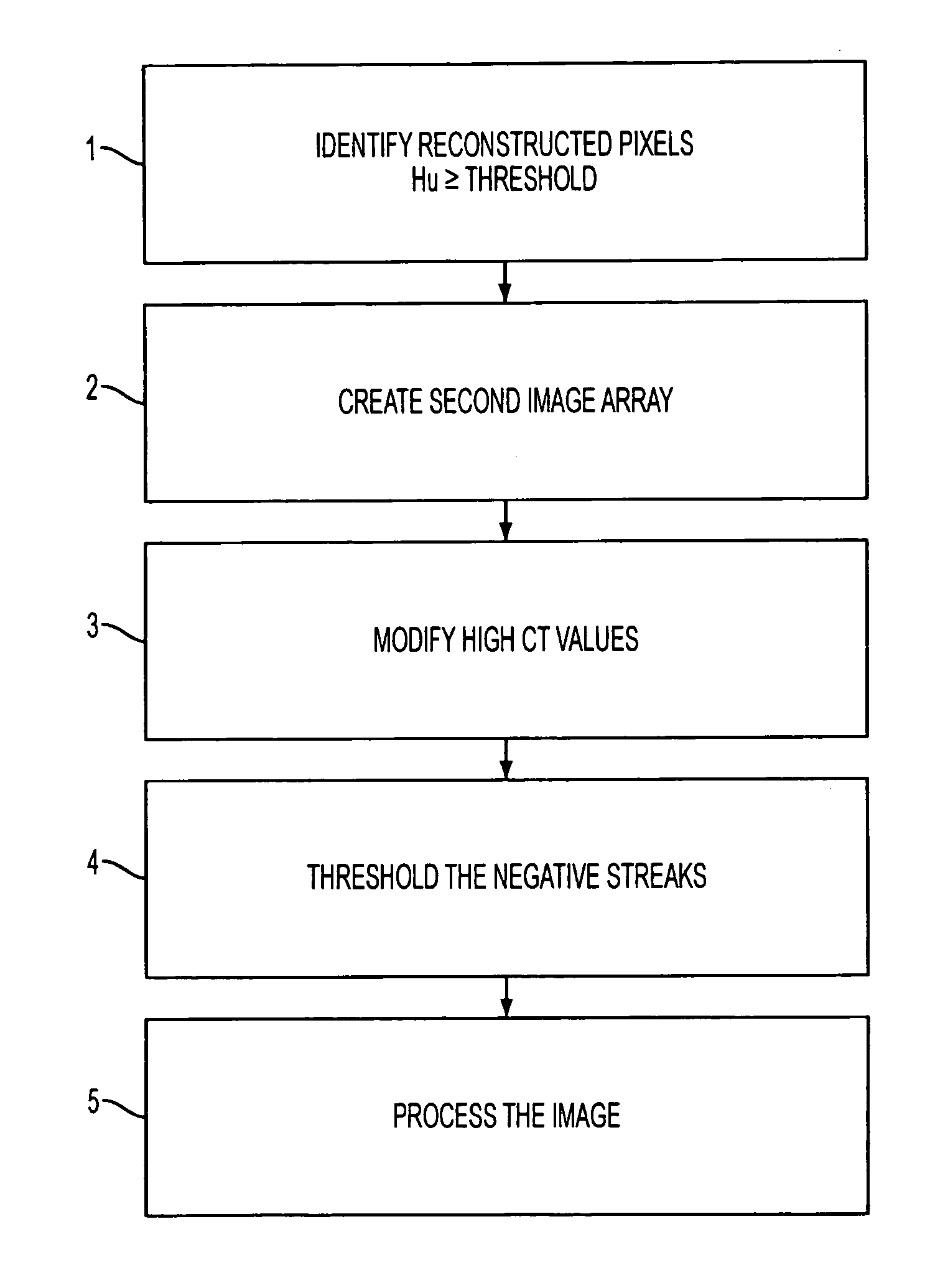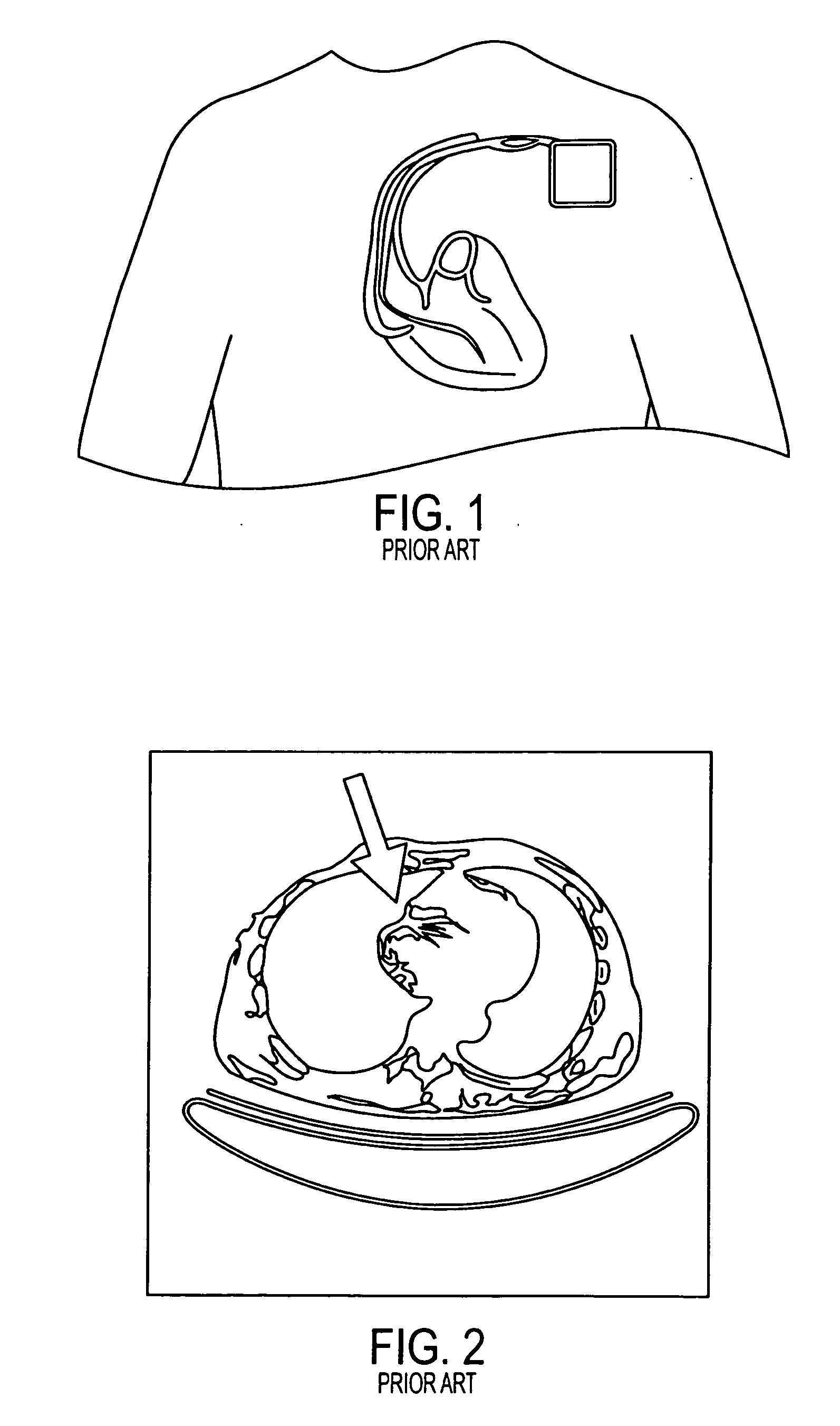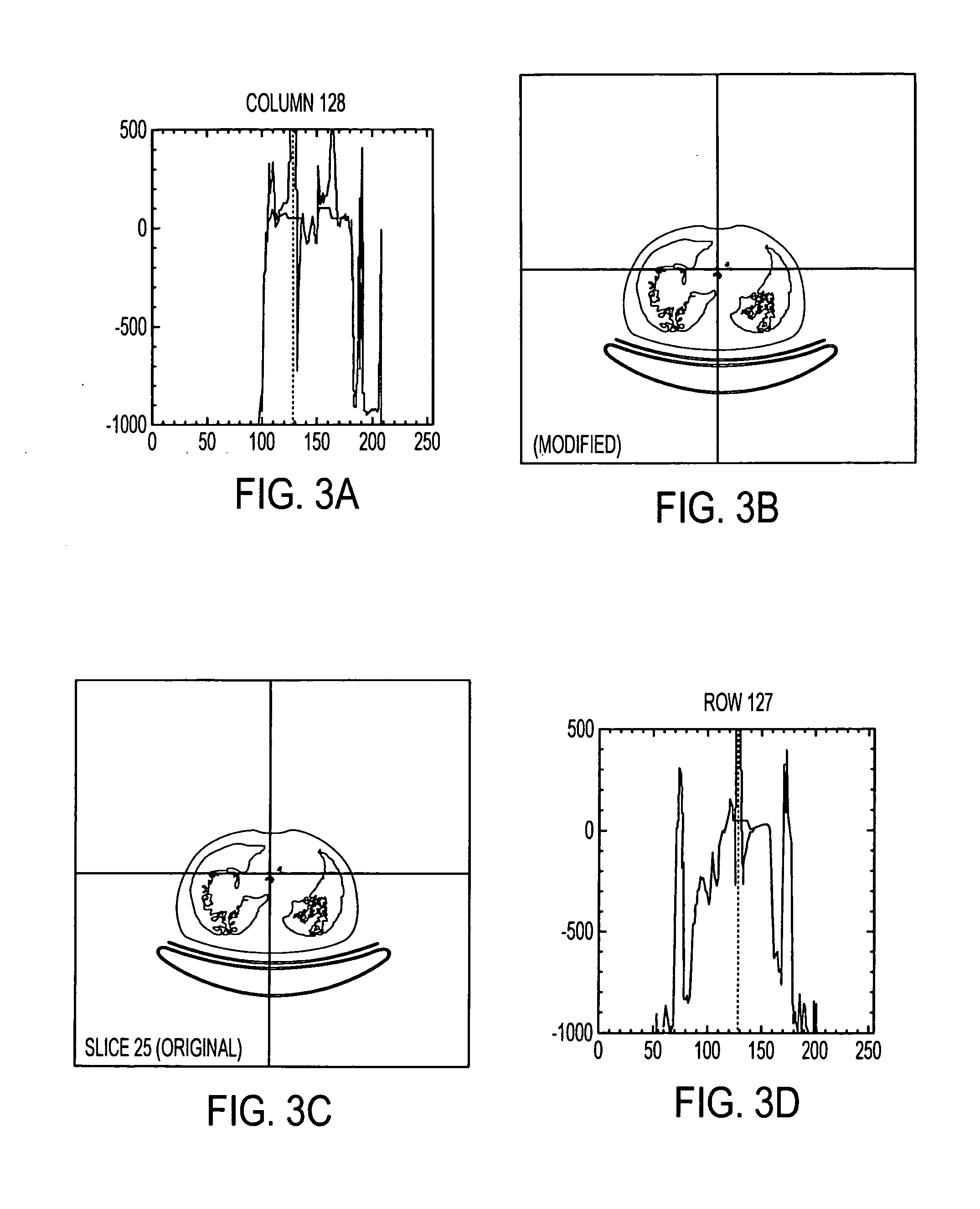Image-based artifact reduction in PET/CT imaging
a technology of image-based artifacts and pet/ct scans, applied in the field of medical imaging, can solve problems such as inability to accurately convert to mu map pixel values, difficulty in computing attenuation correction factors used, and inability to solve problems, etc., to achieve simple and robust effect of reducing errors in cardiac pet/
- Summary
- Abstract
- Description
- Claims
- Application Information
AI Technical Summary
Benefits of technology
Problems solved by technology
Method used
Image
Examples
Embodiment Construction
[0036] Exemplary embodiments of image-based artifact reduction (IBAR) methods for combined positron emission tomography and computed tomography (PET / CT) scans. The present embodiments are useful in the case in which the CT measurement of a PET / CT scan is corrupted by artifacts such as a moving piece of metal. The situation of reducing metal artifacts alone is known as metal artifact reduction, or MAR.
[0037] The exemplary IBAR method modifies the pixel values I(X,Y,Z) in a series of CT image slices. The image values are specified in Hounsfield units (HU). Properly functioning CT equipment creates images in which water is assigned a value of zero (0 HU), air is assigned a value of approximately −1000 HU, and bone and metal are assigned values greater than zero (0 HU). In the PET / CT processing software that has been used, images are first reduced from arrays of size 512×512 pixels to size 256×256 with a rebinning procedure, in which groups of four pixels in the 512×512 matrices are av...
PUM
 Login to View More
Login to View More Abstract
Description
Claims
Application Information
 Login to View More
Login to View More - R&D
- Intellectual Property
- Life Sciences
- Materials
- Tech Scout
- Unparalleled Data Quality
- Higher Quality Content
- 60% Fewer Hallucinations
Browse by: Latest US Patents, China's latest patents, Technical Efficacy Thesaurus, Application Domain, Technology Topic, Popular Technical Reports.
© 2025 PatSnap. All rights reserved.Legal|Privacy policy|Modern Slavery Act Transparency Statement|Sitemap|About US| Contact US: help@patsnap.com



